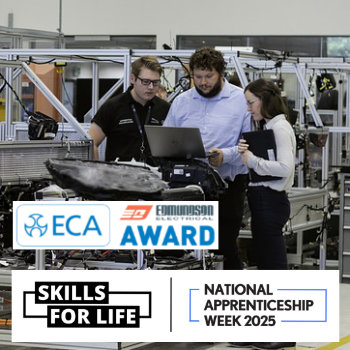Greenbuild 2017
In an environment where ‘partnership is the new leadership,’ the International WELL Building Institute™ (IWBI™) and BRE used Greenbuild in Boston, USA in November 2017 to demonstrate the value of collaboration on multiple levels to advance human health through better buildings.
In November 2016, we reported that the International WELL Building Institute (IWBI) and BRE had announced an alignment between the WELL Building Standard (WELL) and BREEAM. Combining the two standards was intended to make it easier for projects seeking to conform with them.
At Greenbuild, IWBI Chairman and CEO, Rick Fedrizzi said:
"Our relationship with BRE is in evidence across several categories. We’re proud of the pioneering work we’ve done by developing a crosswalk between the WELL Building Standard and BREEAM, simplifying for the market opportunities to use these two leading building standards in tandem to achieve both sustainability and human health goals.
"Additionally, we’ve partnered with BRE to undertake practical performance verification research as we are developing WELL v2. On-site performance verification is a unique hallmark of WELL. When it comes to human health, good intentions and checklists are simply not enough to ensure that a building’s performance is in a position to improve human performance. Our shared commitment to this idea of verified performance is why leadership companies are committing to the high bar that WELL provides."
A key resource used by BRE in undertaking this performance verification research is the room-sized environmental chamber in which known concentrations of volatile organic compounds (VOCs) or other indoor air pollutants may be introduced into the space at controlled temperature, humidity and ventilation rates.
The chamber, built to the standard room specifications prescribed in the European Standard CEN/TS 16516: 2013, was designed, built, and commissioned as part of a recent collaborative European Commission (EC) research project.
Two VOC source chambers are used – one to trial the VOC sources and one through which air is passed to carry the VOCs into the chamber. In the current, research the chamber is used to compare VOC measurement methods and technologies for the determination of ‘TVOC’ (total VOC) in air at given concentrations of selected VOCs.
The current research initiatives being undertaken jointly by BRE and IWBI also involve evaluation of monitors used to measure particulate matter in air, and evaluation of the methods used to measure light levels and to use the data in order to assess circadian lighting.
Dr. Andy Dengel, CChem MRSC, Director, BRE Environment said:
"We see the value of successive rounds of collaborative research in pushing the envelope when it comes to ensuring that performance verification methodologies are robust and fit for purpose. That’s why we’re excited to showcase this work to WELL practitioners and power users who are contributing to the development of WELL v2."
Martin Townsend, Director of Sustainability at BRE said:
"If we are to drive change for the built environment at all the different scales of design and operation, we need to create strong partnerships with like-minded organisations. In doing so, we can create a supportive environment for the industry to improve the way in which we look at buildings. Such certainty comes from the industry having confidence in an independent approach and standards built on research and science, a belief IWBI and BRE share."
This article was originally published here on 16th Nov 2017 by BRE.
[edit] Find out more
[edit] Related articles on Designing Buildings Wiki
Featured articles and news
Shortage of high-quality data threatening the AI boom
And other fundamental issues highlighted by the Open Data Institute.
Data centres top the list of growth opportunities
In robust, yet heterogenous world BACS market.
Increased funding for BSR announced
Within plans for next generation of new towns.
New Towns Taskforce interim policy statement
With initial reactions to the 6 month policy update.
Heritage, industry and slavery
Interpretation must tell the story accurately.
PM announces Building safety and fire move to MHCLG
Following recommendations of the Grenfell Inquiry report.
Conserving the ruins of a great Elizabethan country house.
BSRIA European air conditioning market update 2024
Highs, lows and discrepancy rates in the annual demand.
50 years celebrating the ECA Apprenticeship Awards
As SMEs say the 10 years of the Apprenticeship Levy has failed them.
Nominations sought for CIOB awards
Celebrating construction excellence in Ireland and Northern Ireland.
EPC consultation in context: NCM, SAP, SBEM and HEM
One week to respond to the consultation on reforms to the Energy Performance of Buildings framework.
CIAT Celebrates 60 years of Architectural Technology
Find out more #CIAT60 social media takeover.
The BPF urges Chancellor for additional BSR resources
To remove barriers and bottlenecks which delay projects.
Flexibility over requirements to boost apprentice numbers
English, maths and minimumun duration requirements reduced for a 10,000 gain.
A long term view on European heating markets
BSRIA HVAC 2032 Study.
Humidity resilience strategies for home design
Frequency of extreme humidity events is increasing.
National Apprenticeship Week 2025
Skills for life : 10-16 February

























